Jupiter
Picture credits
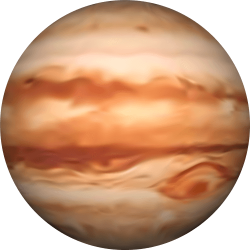
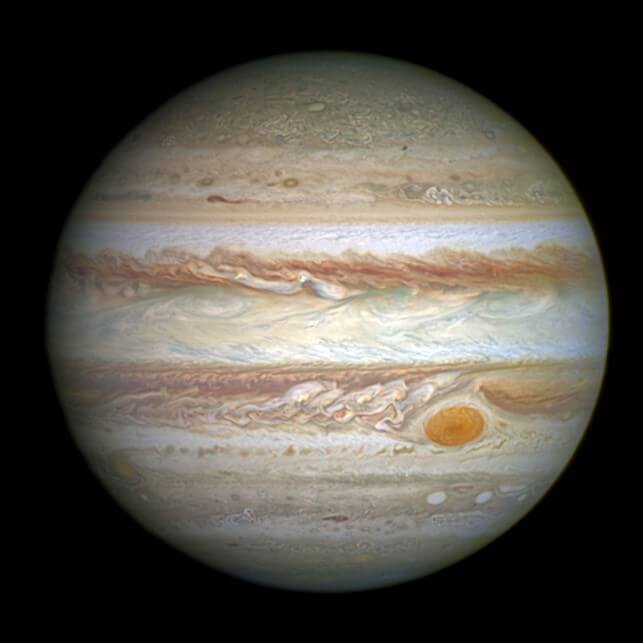
Jupiter is a huge gas planet with extreme properties. While Earth would fit a million times inside the Sun, Jupiter is so big that it would “only” fit about 1300 times. It is more than twice as massive as all the other planets combined. It’s got faint rings, too.
At the equator, it rotates at a speed of about 12.5 km/s – that’s 27 times faster than Earth! The fast rotation leads to a flattened shape: Jupiter’s radius at the poles is about 10.5 times the Earth’s radius, while at the equator it is 11.2 Earth radii.
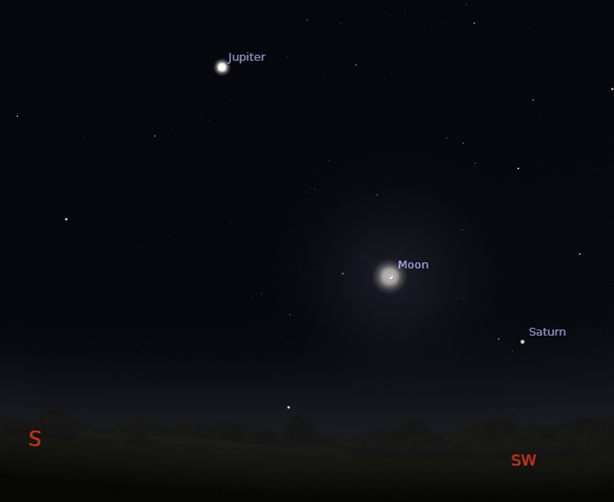
Following Venus and the Moon, Jupiter is the third brightest object in the night sky. Venus orbits the Sun at a fairly close distance. It can therefore usually be observed shortly before or after sunrise or sunset. Jupiter, however, is about 5 times further away from the Sun than Earth is. Therefore, Jupiter’s position in the night sky is strongly dependent on the time of year: In Germany, Jupiter can be observed close to the Sun in spring and opposite the Sun’s position in autumn.

Jupiter’s magnetic field is about 90 times stronger than Earth’s magnetic field and about as strong as that of an MRI machine. Similar to Saturn’s magnetic field, it is created by metallic hydrogen circulating inside the planet, just like the liquid iron in the earth’s core. Strong currents in the magnetic field even produce auroras around the planet’s poles, as well as strong radio emissions.

The clouds on Jupiter consist of ammonia crystals that form the white, red, orange and yellow storm bands. The bands are storm layers that rotate at a speed of about 100 m/s in opposite directions. They are “only” 50 km thick. Below the coloured layers is only hydrogen and helium, down to the core.
Jupiter’s big red spot is an ever-present giant storm about the size of Earth.
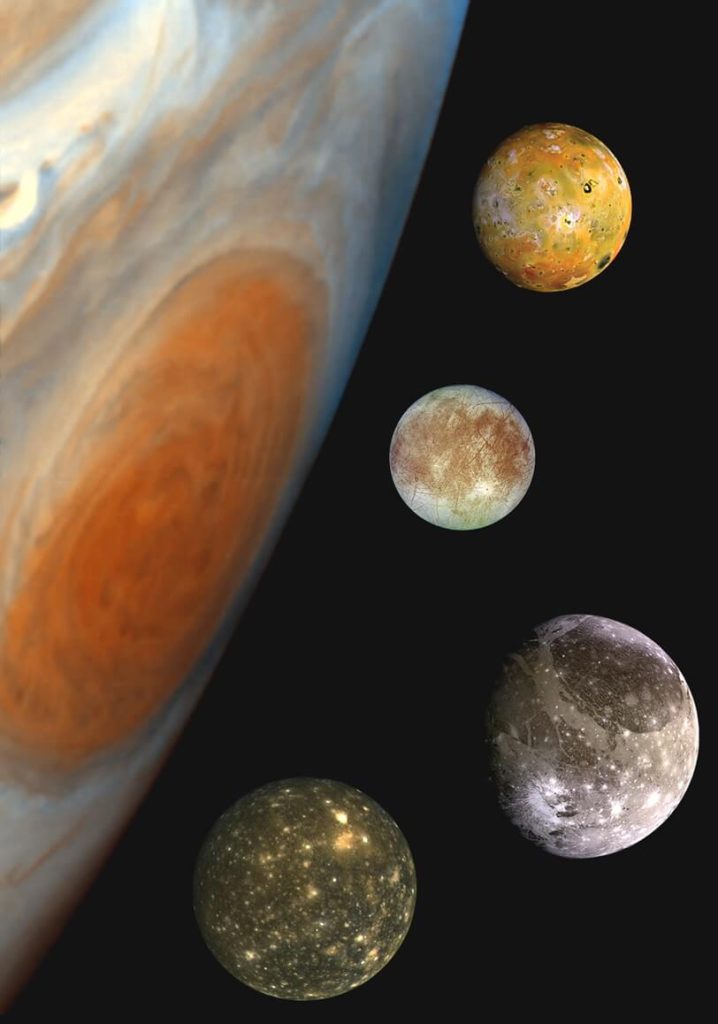
Galileo Galilei discovered the four largest of Jupiter’s 95 moons over 400 years ago, in 1610. Io is the moon closest to Jupiter and very similar to Earth’s moon. Jupiter’s gravitational pull causes strong volcanism on Io, which is why it has a rocky instead of an icy surface.
Three of Jupiter’s moons have oceans of liquid water. One of these moons, Europa, may harbour life or at least have an environment where life is possible. It is located in a saltwater ocean beneath the ice surface.
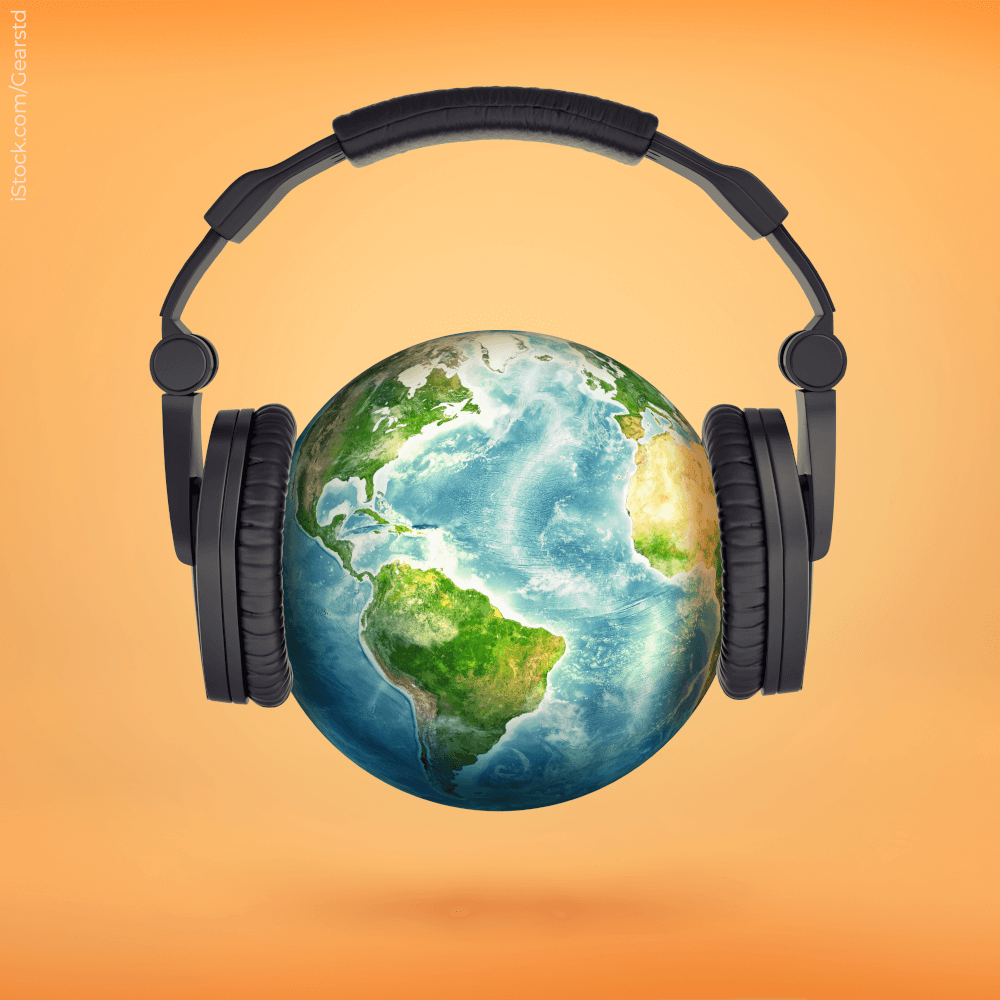
Audio guide
(available soon)
PhD students from the Institute of Physics at the University of Rostock give exciting insights into their research and explain the universe.
Quiz
In our Solar System, Jupiter’s moon Ganymede is not only the largest moon, but also…
